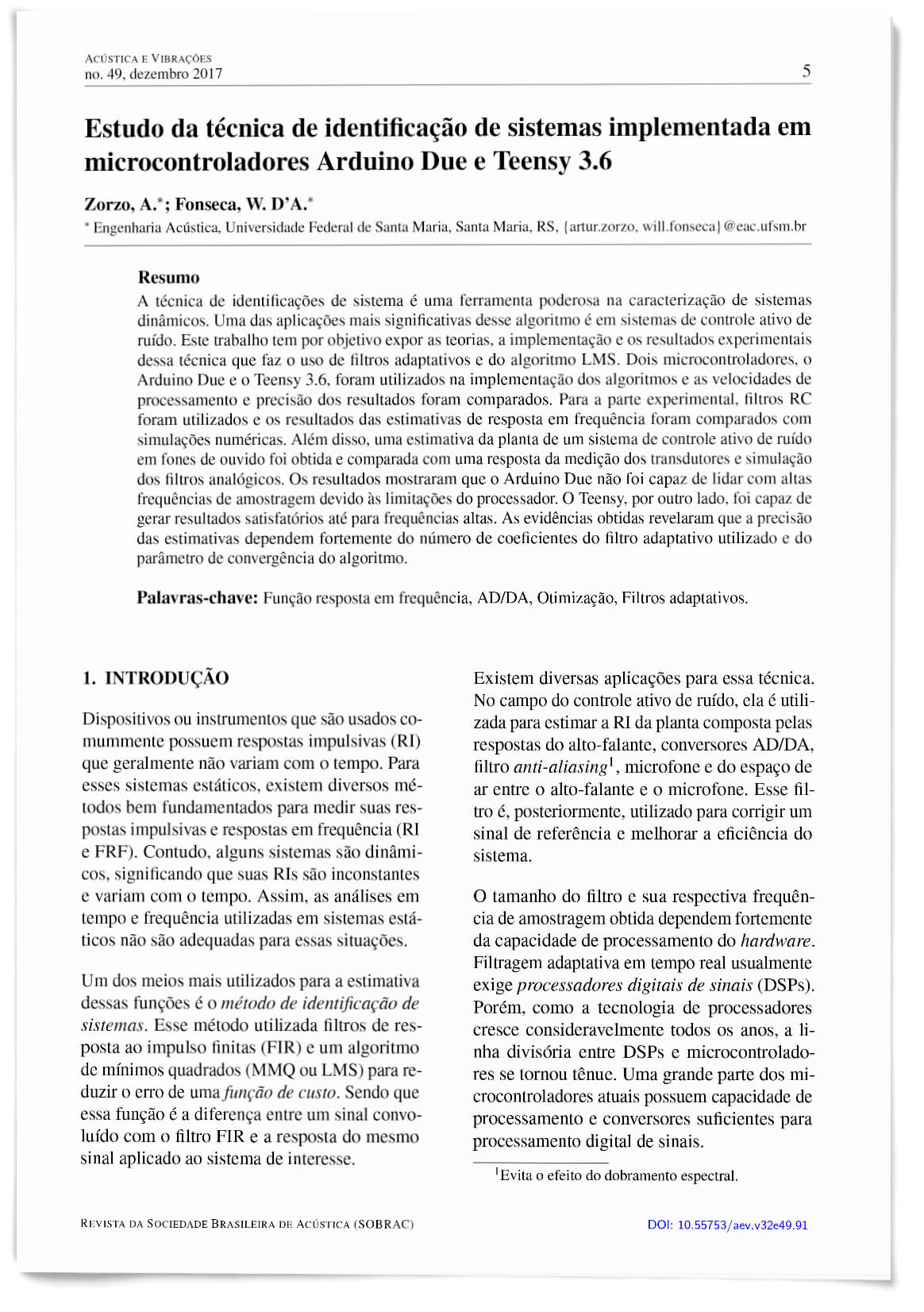Study of system identification technique implemented in Arduino Due and Teensy 3.6 microcontrollers
DOI:
https://doi.org/10.55753/aev.v32e49.91Keywords:
frequency response function, AD/DA, optimization, adaptative filtersAbstract
The system identifications technique is a powerful tool in the characterization of dynamic systems. One of the most significant applications of this algorithm is in active noise control systems. This work aims to expose the theories, implementation and experimental results of this technique that makes use of adaptive filters and the LMS algorithm. Two microcontrollers, Arduino Due and Teensy 3.6, were used to implement the algorithms and the processing speeds and accuracy of the results were compared. For the experimental part, RC filters were used and the results of the frequency response estimates were compared with numerical simulations. In addition, a plant estimate of an active noise control system in headphones was obtained and compared with a response from the measurement of transducers and simulation of analog filters. The results showed that the Arduino Due was not able to handle high sampling frequencies due to processor limitations. Teensy, on the other hand, was able to generate satisfactory results even for high frequencies. The evidence obtained revealed that the accuracy of the estimates strongly depends on the number of coefficients of the adaptive filter used and on the algorithm's convergence parameter.
References
ARDUINO. What is Arduino. 2017. <https://www.arduino.cc/en/Guide/Introduction>. Acessado em 12/12/2017.
ARM. PROCESSORS CORTEX-M SERIES. 2017. <https://www.arm.com/products/processors/cortex-m>. Acessado em 12/12/2017.
CLARKSON, P. M. Optimal and Adaptive Signal Processing: A Volume in the Electronic Engineering Systems Series: 3. [S.l.]: CRC-Press, 1993. doi: 10.1201/9780203744925 DOI: https://doi.org/10.1201/9780203744925
DEVICES, A. Linear Circuit Design Handbook. [S.l.]: Newnes/Elsevier, 2008. doi: 10.1016/B978-0-7506-8703-4.X0001-6 DOI: https://doi.org/10.1016/B978-0-7506-8703-4.X0001-6
JR, J. A. A.; NETTO, S. L. QRD-RLS Adaptive Filtering. [S.l.]: Springer, 2009. doi: 10.1007/978-0-387-09734-3 DOI: https://doi.org/10.1007/978-0-387-09734-3
KUO, S. M.; MORGAN, D. R. Active noise control systems – algorithms and dsp implementation. Wiley Series in Telecommunications and Signal Processing, 2009.
PJRC. Teensy USB Development Board. 2017. <https://www.pjrc.com/store/teensy36.html>. Acessado em 12/12/2017.
TAN, L.; JIANG, J. Digital Signal Processing: Fundamentals and Applications. [S.l.]: Elsevier, 2013. DOI: https://doi.org/10.1016/B978-0-12-415893-1.00001-9

Downloads
Published
How to Cite
Issue
Section
License
Copyright (c) 2017 Acústica e Vibrações

This work is licensed under a Creative Commons Attribution-NonCommercial-ShareAlike 4.0 International License.




